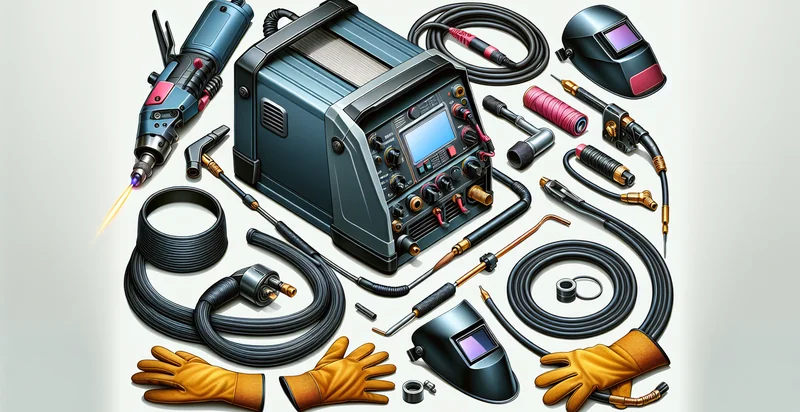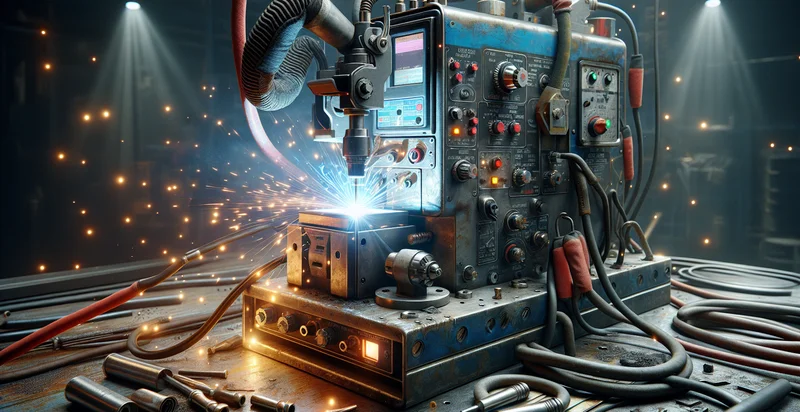Identify welding machine type
using AI
Below is a free classifier to identify welding machine type. Just upload your image, and our AI will predict what type of welding machine it is - in just seconds.

Contact us for API access
Or, use Nyckel to build highly-accurate custom classifiers in just minutes. No PhD required.
Get started
import nyckel
credentials = nyckel.Credentials("YOUR_CLIENT_ID", "YOUR_CLIENT_SECRET")
nyckel.invoke("welding-machine-type", "your_image_url", credentials)
fetch('https://www.nyckel.com/v1/functions/welding-machine-type/invoke', {
method: 'POST',
headers: {
'Authorization': 'Bearer ' + 'YOUR_BEARER_TOKEN',
'Content-Type': 'application/json',
},
body: JSON.stringify(
{"data": "your_image_url"}
)
})
.then(response => response.json())
.then(data => console.log(data));
curl -X POST \
-H "Content-Type: application/json" \
-H "Authorization: Bearer YOUR_BEARER_TOKEN" \
-d '{"data": "your_image_url"}' \
https://www.nyckel.com/v1/functions/welding-machine-type/invoke
How this classifier works
To start, upload your image. Our AI tool will then predict what type of welding machine it is.
This pretrained image model uses a Nyckel-created dataset and has 9 labels, including Arc Gouging, Electroslag, Flux Cored, Mig, Plasma Arc, Stick, Submerged Arc, Thermal Metal Spay and Tig.
We'll also show a confidence score (the higher the number, the more confident the AI model is around what type of welding machine it is).
Whether you're just curious or building welding machine type detection into your application, we hope our classifier proves helpful.
Related Classifiers
Need to identify welding machine type at scale?
Get API or Zapier access to this classifier for free. It's perfect for:
- Automated Quality Control: A welding machine type identifier can be integrated into production lines to automatically assess the type of welding machine being used for various components. By identifying machines in real-time, organizations can ensure that the correct equipment is utilized for specific tasks, thus reducing quality defects.
- Predictive Maintenance: By utilizing a welding machine type identifier, businesses can analyze the performance and usage patterns of different welding machines. This data can lead to predictive maintenance schedules, reducing downtime and extending the lifespan of machinery through timely interventions.
- Inventory Management: Welding shops can employ an identifier to streamline inventory management by tracking the availability and usage of different welding machine types. This ensures that equipment is accurately monitored, reducing excess inventory and improving resource allocation.
- Training and Skill Development: The welding machine type identifier can be used in training programs to educate new employees on the specific functions and requirements of different machines. By providing insights into the equipment used, trainers can tailor programs to enhance skills and efficiency among staff.
- Compliance and Reporting: Companies in regulated industries can utilize this identifier to ensure that specific welding machines meet required safety standards and operational guidelines. It allows for better tracking and reporting of machine usage, aiding in compliance audits and improving overall safety metrics.
- Performance Analysis: By incorporating a welding machine type identifier into data analytics systems, businesses can compare the effectiveness and efficiency of different machine types. This performance analysis helps in making informed decisions on future investments and enhancements.
- Supply Chain Optimization: The identifier can be used to collect data on welding machine types that are most frequently utilized across various production facilities. This information fosters better collaboration with suppliers, optimizing the supply chain based on actual usage patterns and reducing costs associated with machine procurement.


